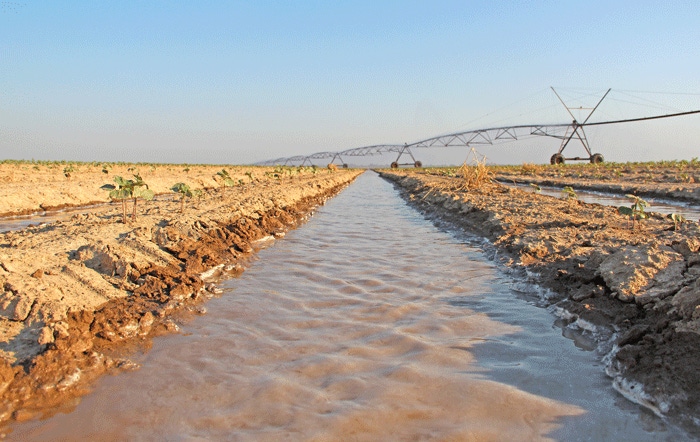May 30, 2013

USDA researchers in Bushland, Texas, are helping farmers make the most of their water supplies in a region where they depend on the Ogallala Aquifer, a massive underground reservoir under constant threat of overuse.
Steve Evett, Susan O'Shaughnessy and their colleagues in the Agricultural Research Service (ARS) are developing soil, water and plant stress sensors and automated irrigation systems designed to irrigate fields only when absolutely necessary.
ARS is USDA's principal intramural scientific research agency.
The researchers are working on two complementary approaches. One system applies water based on crop water stress levels detected by wireless sensors mounted on the pipelines of above-ground commercial irrigation systems. The sensors determine variable water needs as the irrigation system moves across a field.
In the other approach, sensors in the soil trigger irrigation based on soil water content. That technology is designed for urban sites and is being adapted so that it will work in agriculture.
The effectiveness of the above ground system has been verified in numerous studies. In one, the researchers cultivated early- and late-maturing sorghum for two years and used 16 prototype wireless sensors on a center-pivot irrigation system to monitor crop canopy temperatures as the system moved across the fields. Instruments recorded weather data as the system moved.
The researchers compared its effectiveness with a system in which irrigation was applied based on readings taken with a neutron probe, an accurate research tool that growers avoid because of cost and regulatory issues.
The results, published in Agricultural Water Management, showed the automated system was as effective as the manual method, producing similar grain yields and water-use efficiency levels. For the study, the sensor network was mounted on a six-span center pivot, but the technology could be adapted to other types of irrigation systems.
To develop the subsurface soil sensors, Evett and his colleagues established a cooperative research and development agreement with Acclima, Inc., of Meridian, Idaho, which makes sensor-based systems for irrigating lawns, shrubs and ornamentals. For those uses, Acclima's systems only need to monitor water content to depths of about 4 to 6 inches, but sensors used in agriculture would need to take deeper readings.
To that end, Evett and his Acclima partners are developing new technology that uses hollow, plastic tubes that can be drilled deeper into the soil. The tubes are divided into segments that attach to each other for drilling to any desired depth. Prototype designs tested in water and test fluids, and in clay and loam soils, have shown that the approach is feasible. ARS and Acclima have filed for a patent on the technology.
Read more about the research in the April 2013 issue of Agricultural Research magazine.
More from Southeast Farm Press
Cotton industry responds to loss of DPL 555 with improved varieties
Do opponents of crop insurance oppose farm programs?
Strong demand for tobacco leads to increased plantings
Georgia peanut growers encouraged by farm bill progress
You May Also Like




